Purslane
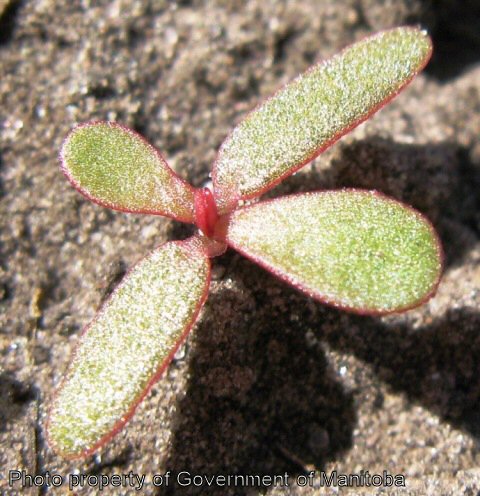 click to enlarge |
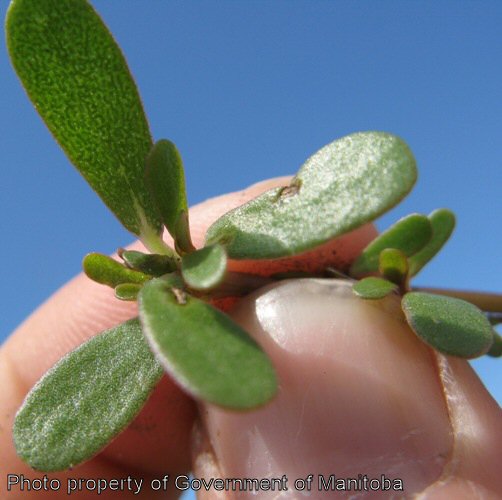 |
 |
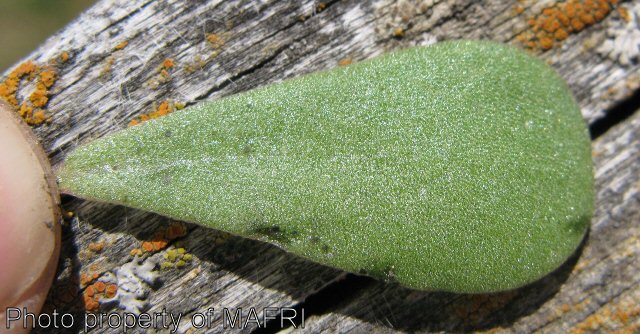 |
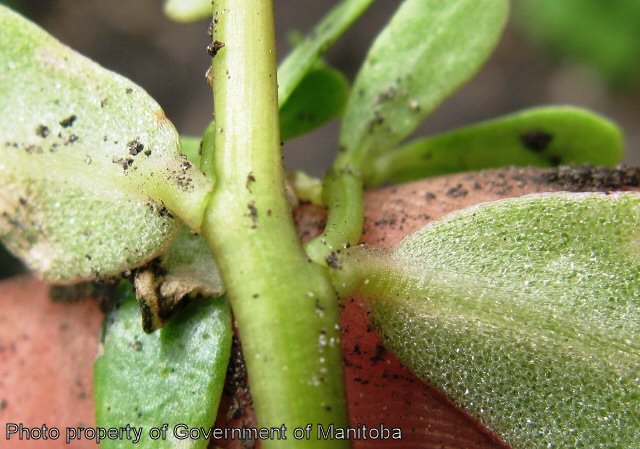 |
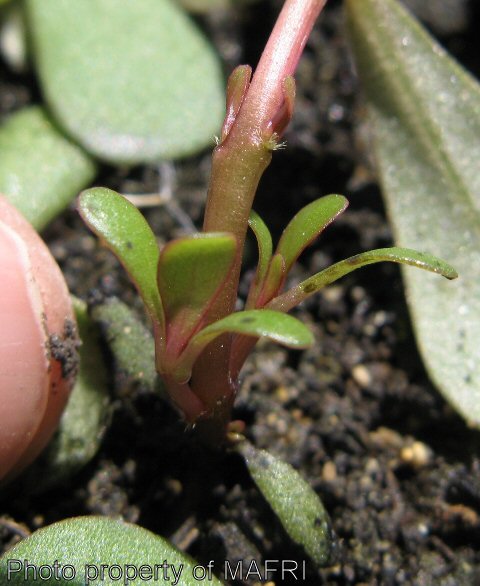 |
 |
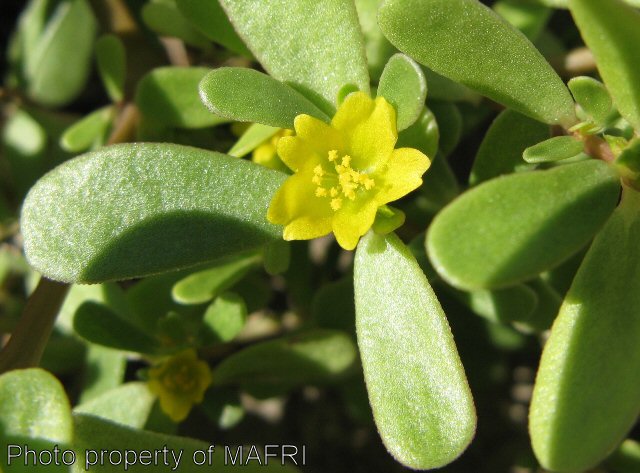 |
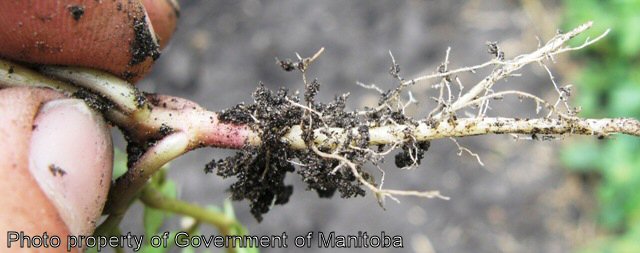 |
Biology
Purslane is an annual weed, reproducing by seeds and adventitious roots, requiring warm temperatures to germinate. This weed will not tolerate shade. The stems are prostrate, to 30 cm long, succulent, glabrous, and reddish in colour. The leaves are alternate, succulent, dark green to reddish green, flat, spatulate, and usually crowded at the ends of branches. The flowers are yellow and occur in groups of 1-3 in the axils of leaves and ends of branches. They are usually hidden by the closed sepals which only open on bright sunny mornings. The seeds are very tiny, 0.7 mm in diameter, black, flattened, rounded, borne in a small capsule, and are covered with bumps.
This weed grows in gardens, row crops, and waste areas. It is a prolific seed producer that is difficult to control by cultivation because the stems and leaves have enough water stored in them to enable seeds to be produced even after they have been cut off from their roots. A problem weed in commercial greenhouses.
Scouting Techniques
Take a minimum of 20 weed counts across the field. Scout frequently following periods of high temperatures for flushes of this weed because it requires high temperatures to germinate.
Threshold/Yield Loss
Not a competitive weed in field crops in Manitoba.
Control Tips
- Group 4 herbicide applications
- cultivation or hand weeding, remove uprooted plants because plant fragments can reestablish
- Group 9 &10 in herbicide tolerant crops

